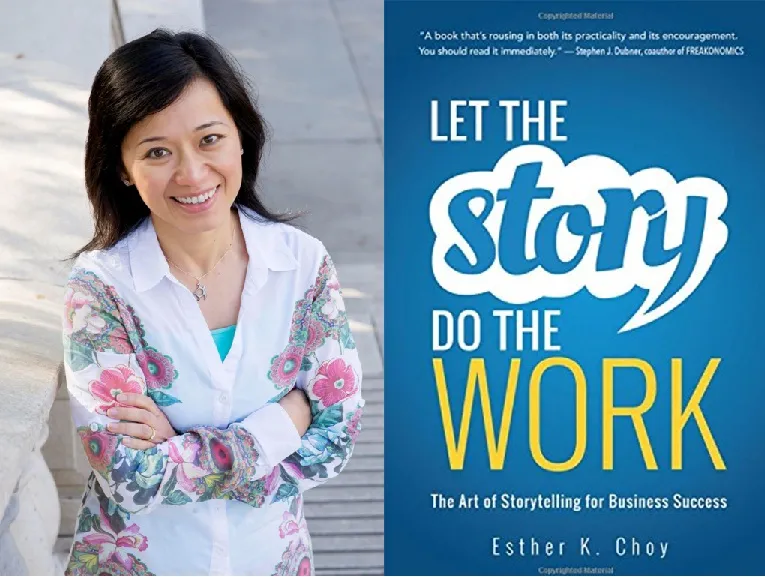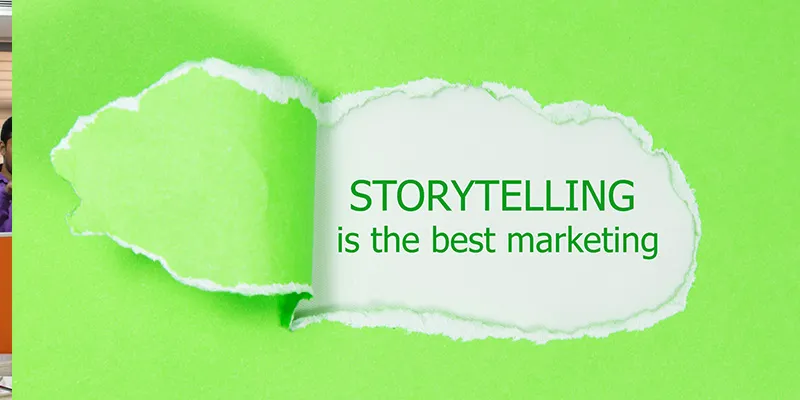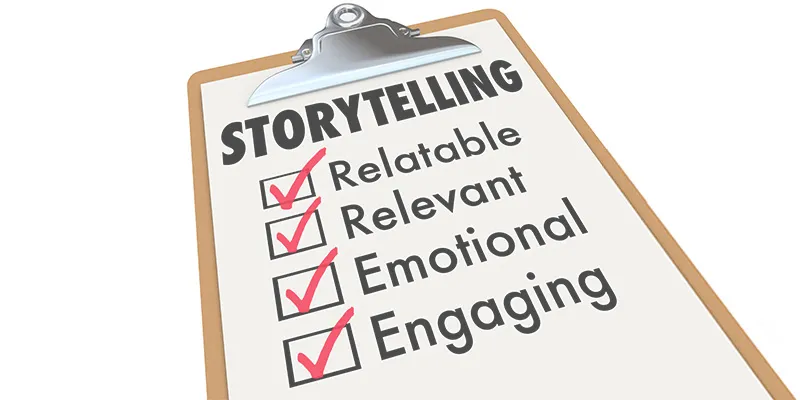From startup to enterprise: storytelling tips by bestselling author Esther Choy
Storytelling is an important habit to cultivate for entrepreneurs and leaders, and customer testimonials are particularly relevant in this regard, according to this bestselling author and storytelling coach.

Esther Choy is the author of Let the Story Do the Work: The Art of Storytelling for Business Success (see my book review; the book is also on my list of Top 10 Books of 2017 for Entrepreneurs).
Esther is also founder of Leadership Story Lab. She has coached managers at companies such as AllState, BP, Brookfield Asset Management, the Chicago Mercantile Exchange Groups, and US Cellular. Esther joins us in this interview on storytelling in business journeys, internal and external stories, identifying story arcs in customer testimonials, and her next book.
YourStory: How can storytelling help in the different stages of the entrepreneurial journey?
Esther Choy: When you're starting up, pitching your idea and generating interest from new clients takes a lot of energy. But if you tell an intriguing story that's different from everybody else’s, investors will be hooked. And then, once you have their attention, you can deliver more of the hard data. The more facts and data you have, the more you have to tell a great story.
Once you get further along in your journey, you have more material to work with. You've seen projects succeed and can tell stories celebrating those successes. But don’t forget that investors will also ask for stories of your mistakes and failures. Be prepared to tell those with the same rigor and charisma. Always focus on the lessons learned and how the lessons are relevant to your potential investors.
Of course, having more material means you have to decide what to focus on. My templates in Let the Story Do the Work can help you figure out the best plots to suit the material you have, the point you want to make, and the audience you hope to reach.
Another challenge in a large enterprise is that you need to attract and retain talent. People don’t buy what you do -- they buy why you do it, as leadership expert Simon Sinek would say. That’s as true of your employees and potential employees as it is of your customers. Your story will help you convey your why.
Every step of the way, you need to be able to persuade your audiences to make decisions in your favour.

YourStory: How should innovators strike that delicate balance between ‘stick to your vision’ and ‘adapt to a changed world?’
Esther Choy: Vision is a conceptual destination. For example, my vision is to create “a thriving marketplace where story connects humanity.” When I started Leadership Story Lab, that marketplace was a space I imagined but had not yet experienced. Many people have not either. I didn’t have stories about what this place looked and felt like because, by definition, a vision describes a place that you are creating.
Once you have articulated your vision, you should then use stories to help your audiences understand and get excited about it. For many entrepreneurs, the best way to tell stories that illustrate their visions is through customers’ testimonials. Having perfectly happy customers is the first step, but it’s hardly enough. You have to ask them to create the kind of testimonials that become stories you can use.
Take a look at the story arc in this recent Amazon book review by entrepreneur Pack Matthews:
...I had no idea how to leverage the possibilities of crafting quest stories for prospective customers to fit themselves into. We know we should put customers at the centre of all our marketing material, but until Choy's book, I haven't found the simple structure for consistently pulling that off.
Now I do.
My next blog post awaits... As a grin of satisfaction takes over my face I press ‘Publish’.
Matthews’ testimonial has a story arc — starting with the frustration he usually feels in telling his origin story, describing “meeting” Let the Story Do the Work, and then ending with how his situation has now changed entirely because of it.
YourStory: How was your book received, and how do you see storytelling connect with different kinds of audiences?
Esther Choy: My book was the No 1 New Release on Amazon when it was first published in July last year, for nearly two weeks! I've found it very gratifying to see so many people apply the concepts in Let the Story Do the Work.
One of the first magazines that reviewed my book was PMWorld Journal, and I was excited to see project managers applying the principles of storytelling! I've also heard from entrepreneurs, portfolio managers, teachers, accountants, quality assurance professionals, job seekers and others who are finding the book's tools, templates and advice helpful.

YourStory: What are some notable new examples of impactful stories and storytellers you have come across since your book was published?
Esther Choy: I recently came across Radio Flyer’s inspiring retelling of their founder’s story: the short film Taking Flight. This is an excellent example of how a company sticks to its founder’s vision but imbues a modern feel to its corporate values. It captures the character of their founder in a modern context — so brilliantly that it won an Emmy!
YourStory: Which governments have you come across that also have storyteller roles and examples?
Esther Choy: I’ve been inspired by the way Maneka Gandhi, the Indian minister for Women and Child Development, has used stories to encourage equality. This past year, she established a storytelling contest inviting women to share how their fathers stood up for their rights. Gandhi knows the persuasive power of story!
YourStory: What is your current field of research in storytelling?
Esther Choy: In the field of business storytelling, I am always researching and considering how to adapt storytelling to my clients' particular context, be it tech, finance, medicine or non-profit, and I love seeing this yield new insights.
YourStory: What are ways in which leaders and managers can effectively use internal storytelling to inspire their teams?
Esther Choy: First and foremost, by considering their teams' point of view. Picture a piano teacher who wants to lead her students to be world-class classical concert pianists. For some of her students, this might not match up with their goals at all. Some might want to be jazz pianists instead; others might simply want to play for their friends.
So an inspiring story about a child who practised six hours a day and was performing Chopin's nocturnes in Paris by the time she was 12 might make students less enthused about practising! Similarly, leaders need to understand their teams' capabilities and career goals and know what will motivate them.
I often think of Richard Branson as a model for how leaders can use internal storytelling to inspire their teams. One of his most inspiring moments is the farewell letter he wrote to his employees after the Virgin America buyout (which he wasn’t able to prevent). He kept employees inspired even though they would not be working for him anymore!

YourStory: What are your findings with respect to leadership traits in other cultures, eg Asia, Europe?
Esther Choy: No matter the culture, a leader can adapt storytelling to their particular context. For instance, I know a wealth manager who works with ultra-rich clients in China. Because he knows their context very well, he understands their anxieties about how difficult it is to pass their wealth onto the next generation. The stories he tells address that fear, without making his clients seem fearful.
Leaders must also cross cultural divides, and stories that find common ground and draw on universal experiences accomplish this well.
YourStory: What are your observations on ‘digital’ storytelling, eg using social media?
Esther Choy: Social media’s story unfolds over hours, days and even years. Because of that, consistency and agility are both important. People follow you because you offer something they want and communicate it in a way they appreciate.
Yet your audience’s needs change over time. So reflecting on what sets you apart and what your story is will enable you to tell that story in a consistent yet adaptive way.

YourStory: What is your next book going to be about?
Esther Choy: A very wise person once said, “To be a great storyteller, one must first become a great story-collector.” In some ways, my contemporaries and I have all gotten it wrong. We put way too much focus on telling our stories instead of collecting stories from others. My next book will correct this mistake.
In any social setting, professional or otherwise, fostering an environment where others feel safe and invited to share their stories instantly creates bonds. I’ve watched people who are tired of networking and small talk become conversation mavens when they’re armed with the right story-collecting tools, such as these Story Mining Questions on my website.
Ask. Wonder. Collect. Be curious and respectful. Toss out great questions and watch with wonder as others share their stories with you. That’s what my next book is going to be about.
YourStory: What is your parting message to the innovators and aspiring entrepreneurs in our audience?
Esther Choy: With the right tools, anyone can learn to tell brilliant stories. Time and time again, I have seen people who didn't think they were storytellers learn to tell stories and see their audiences become transfixed by their newly developed stories. Results follow.
I would also like to say that I'd love to connect with your audience! Stop by on my website or follow me on Twitter!








